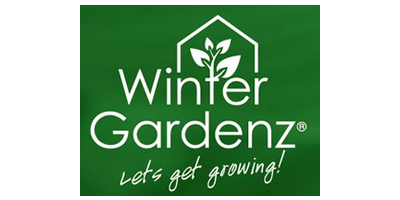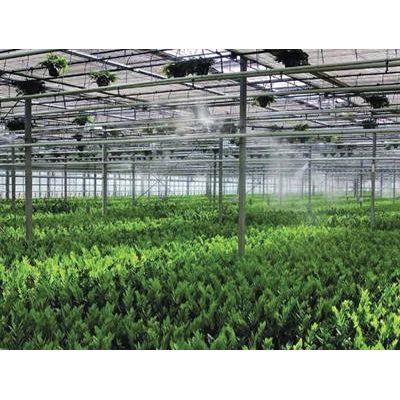

- Home
- Companies
- Winter Gardenz Limited
- Products
- Fogging System

Fogging System
Control the environment in your greenhouse with a Fog System. Having a Fog System in your greenhouse is the best way of controlling the humidity level to provide the optimum conditions for your plants. For plant propagation ideal conditions are around 80-85% RH. For general plant production or fruit production, around 70% RH is ideal for most plants. A Fog System not only helps you with controlling the humidity level. Importantly, it also cools the air evenly across the entire greenhouse. It is the most accurate tool for humidity control in greenhouses.
- Ability to cool greenhouses to stable growing conditions even on the hottest days
- Suited to most greenhouses designs
- Cost-effective for cooling
- Easy to fit in existing greenhouses
- Better accuracy for setting humidity at a certain level
First the water is cleaned by a 10 micron filter, then by a 5 micron filter to keep nozzle blockages to a minimum. The high pressure pump system brings it to between 800-1000psi (60-70Bar). The pure water then flows through stainless steel main lines to stainless steel lateral lines throughout the greenhouse, where it is forced out past the anti-drip valve, through the stainless steel impeller and nozzle orifice. It produces true 10 micron fog throughout the greenhouse. All parts in contact with the water are either brass or stainless steel and are locally available.
A lot of growers use two variables of the environment in their greenhouse to control the greenhouse; temperature and humidity. This would mean that they would try to get stable values for the temperature and humidity level. Controlling your greenhouse in this way is completely fine, however there is a more practical method.
More growers are starting to prefer using the ‘Vapour Pressure Deficit’-level (VPD). It is determined by the temperature and humidity level of your greenhouse. It has the same variables, but nonetheless this method has some advantages. VPD is the difference (deficit) between the amount of moisture in the air and how much moisture the air can hold when it is saturated. When the VPD is too high, plants can no longer transpire and dew of water will start to form on the leaves. If it is too low, the plant can dry out. Too low or too high VPD-levels will lower the capability of the plant to transport nutrients and will have a negative impact on growth.
The first thing this graph tells us is that plants have a different preferred humidity level for a given temperature and different preferred temperatures for a given humidity level. Therefore you don’t have to worry if your greenhouse is too hot, too cold, too dry or too wet. You just have to make sure that your plants are constantly in the ‘sweet spot’, in which the combination of temperature and humidity is ideal for plant growth. This way you longer have to control both temperature and humidity, but just have to adapt the both to one another. Since the greenhouse warms up steadily over the day due to sun hours, it makes it easier and more cost effective to adjust the humidity level to the changes in temperature.
The other advantage is that you no longer have to look at two variables. If you never used the VPD before it might take some time to get used to this method at first. The most important thing is to keep it in the sweet spot. If the VPD-level is too high, this means that you should increase the humidity level or decrease the temperature. If the VPD-level is too low, this would means that you should decrease the humidity level or increase the temperature.
